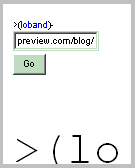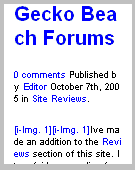
Google xhtml
www.google.com/gwt/n (xhtml-mp)
When you do a web search with Google on a basic mobile phone and click through to the site, Google resizes images, and breaks pages into smaller chunks so that limited mobilebrowsers can handle them.
Google uses browser detection to vary the size of the chunks from 8KB to 30KB depending on the capabilities of your browser. Images can be turned off to reduce bandwidth even further. The transcoder handles forms but not secure forms.The first image shows how Google disables secure forms.
A unique feature of Google's transcoding engine is that when it finds a group of links with minimal text between them, it assumes that this is site navigation of some sort and collapses them into a single link with a plus sign icon and the first few letters of first menu item (see second image). If you click on the plus sign the menu expands and go can see all the links. The plus sign changes to a minus sign when the menu is expanded. Clicking the minus sign collapses the menu again (last image).
Google also has an undocumented "Enter a URL" Page http://www.google.com/gwt/n which you can use to to transcode any url.
Screenshots:
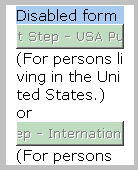
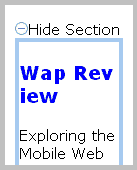
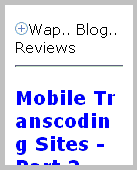
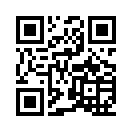
Html To WML
htow.net (wml)
It seems like wml sites are disappearing faster than wml-only phones. If you're stuck with a wml-only device, this transcoder converts (x)html pages into wml. Supports forms but not images.
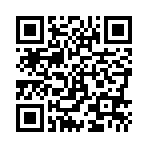
Google Transcoder
www.yeswap.com/GoTo.wml (wml)
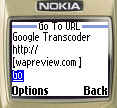 The wml version of Google mobile search used to have a "Go To Url" option that let specify the url of a website. Google then returned a copy of the site transcoded into wml. The transcoding wasn't very fancy, everything except text and links was stripped out. Still, it let you view any site on a wml-only phone. Google still offers the transcoding functionality as part of their mobile search portal for both wml and wap2 but the ability to directly enter a url disappeared sometime last year. I'm not sure why they dropped it but I suspect some product manager thought is was too geeky. Eventually, the go to url functionality returned as a separate page, but only for Wap2 not for wml.
The wml version of Google mobile search used to have a "Go To Url" option that let specify the url of a website. Google then returned a copy of the site transcoded into wml. The transcoding wasn't very fancy, everything except text and links was stripped out. Still, it let you view any site on a wml-only phone. Google still offers the transcoding functionality as part of their mobile search portal for both wml and wap2 but the ability to directly enter a url disappeared sometime last year. I'm not sure why they dropped it but I suspect some product manager thought is was too geeky. Eventually, the go to url functionality returned as a separate page, but only for Wap2 not for wml.
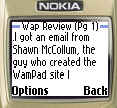 I got to thinking about this when I was looking at the server logs for my mobile portal, yeswap.com which comes in both wml and wap2 flavors. I was surprised that I was still getting a lot of hits to the wml pages, almost 50% of the total. A fair number of the wml requests come from countries like Cuba, the Dominican Republic and Turkmenistan - I guess that's where our old phones wind up when we are done with them. I decided to whip together a little replacement for the Google "Go to url" feature. It lets you enter an address and then calls the Google html to wml transcoder. I don't know if anyone will use it but at least it's available. The url is yeswap.com/goto.wml. For users of the Yeswap mobile portal, just follow the menus to Technology/Internet/Mobile Proxies
I got to thinking about this when I was looking at the server logs for my mobile portal, yeswap.com which comes in both wml and wap2 flavors. I was surprised that I was still getting a lot of hits to the wml pages, almost 50% of the total. A fair number of the wml requests come from countries like Cuba, the Dominican Republic and Turkmenistan - I guess that's where our old phones wind up when we are done with them. I decided to whip together a little replacement for the Google "Go to url" feature. It lets you enter an address and then calls the Google html to wml transcoder. I don't know if anyone will use it but at least it's available. The url is yeswap.com/goto.wml. For users of the Yeswap mobile portal, just follow the menus to Technology/Internet/Mobile Proxies
One nice feature of the old Google html to wml transcoder is that if you pass it an address that returns a wml page, the transcoder gracefully steps aside and passes the original page to you. I wish the Google's wap2 transcoder did the same when it finds a mobile page.

mobileleap
mlvb.net/ (xhtml-mp)
Mobileleap is a commercial site which is "currently free for personal, non-commercial use." It resizes images (to 224px wide, better suited to pda's than phones) but doesn't doesn't break large pages into multiple smaller ones. On the SE and Nokia emulators Mobileleap refused to work, telling me to "enable cookies" although both browsers do support cookies and cookie support was enabled. The Openwave emulator was able to load part of this blog before throwing a page too large error. I was unable to load the Southwest site with Phonifier on any browser (even Firefox), consistently getting a timeout error.
Mobileleap has an extensive settings dialog which allows you configure such things as image quality or turn off images entirely, specify the screen size of the mobile (which seems to have no effect on the transcoded output). Their is an option to replace "large images" with links which doesn't seem to work (or mobileleap doesn't consider a 640 px image "large"). Another option uses CSS styles which enables some background and text colors on most sites but seems buggy as some colors are wrong and block elements appear in the wrong place - often on top of other content obscuring it. If you register, mobileleap will remember your preferred settings, let you save bookmarks and give you a history dialog where you can revisit sites you browsed in the current or previous sessions.
Mobileleap is a mobile RSS reader as well. It works just like Phonifier and has the same disadvantage for use on a phone. The index page which for mobile use should just list the title of each entry but also includes first 200 characters of the entry body which means you have to do too much scrolling to reach the last entry. I found mobileleap fast and reliable however consider the following statement in MobileLeap's FAQ:
"For security reasons, only a limited number of non-registered (anonymous user) requests are allowed per session and per day. Furthermore, to ensure that the demonstration server resources are distributed appropriately, under times of heavy server load users will be capped to a limited number of page requests, with preference given to registered, confirmed users. If you are interested in an unrestricted transcoding account, please contact us."
Mobileleap shows promise, it is a beta after all. They do resize images and they allow you to specify your browser screen dimensions which suggests that they are planing to resize images to fit those dimensions. Hopefully, mobileleap will remain free and unrestricted and will continue to improve.
Screenshots:
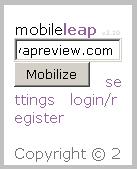
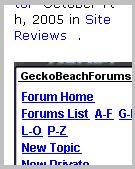
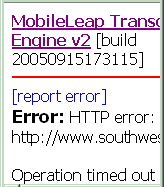

loband.org
www.loband.org/loband/main/ (HTML5)
loband is a non-profit project whose goal is to make complex pages usable over low bandwidth connections in underdeveloped countries. It also helps make sites more usable on PDAs and phones. While not billed as a mobile transcoding proxy, I've included it because it shares many of the characteristics of one.
I've found this site unreliable in the past and, in fact, it was down for several days while I was testing. Loband doesn't split pages that are too large for the device. Loband replaces images with an "[i]" link, clicking the link will attempt to display the original image without any rescaling or image conversion. Loband also unnecessarily removes text and background colors making everything black text on a white background. Both my test pages were too large to load on the Openwave, Motorola, Sony Ericsson and Nokia emulators. Using the Access smartphone emulator, which can load extremely large pages, I was able to browse this blog and most of the Southwest site. When I got to the secure page where I would enter my credit card details, loband redirected me to the real Southwest web page which was not usable on the mobile browser.
Screenshots:
